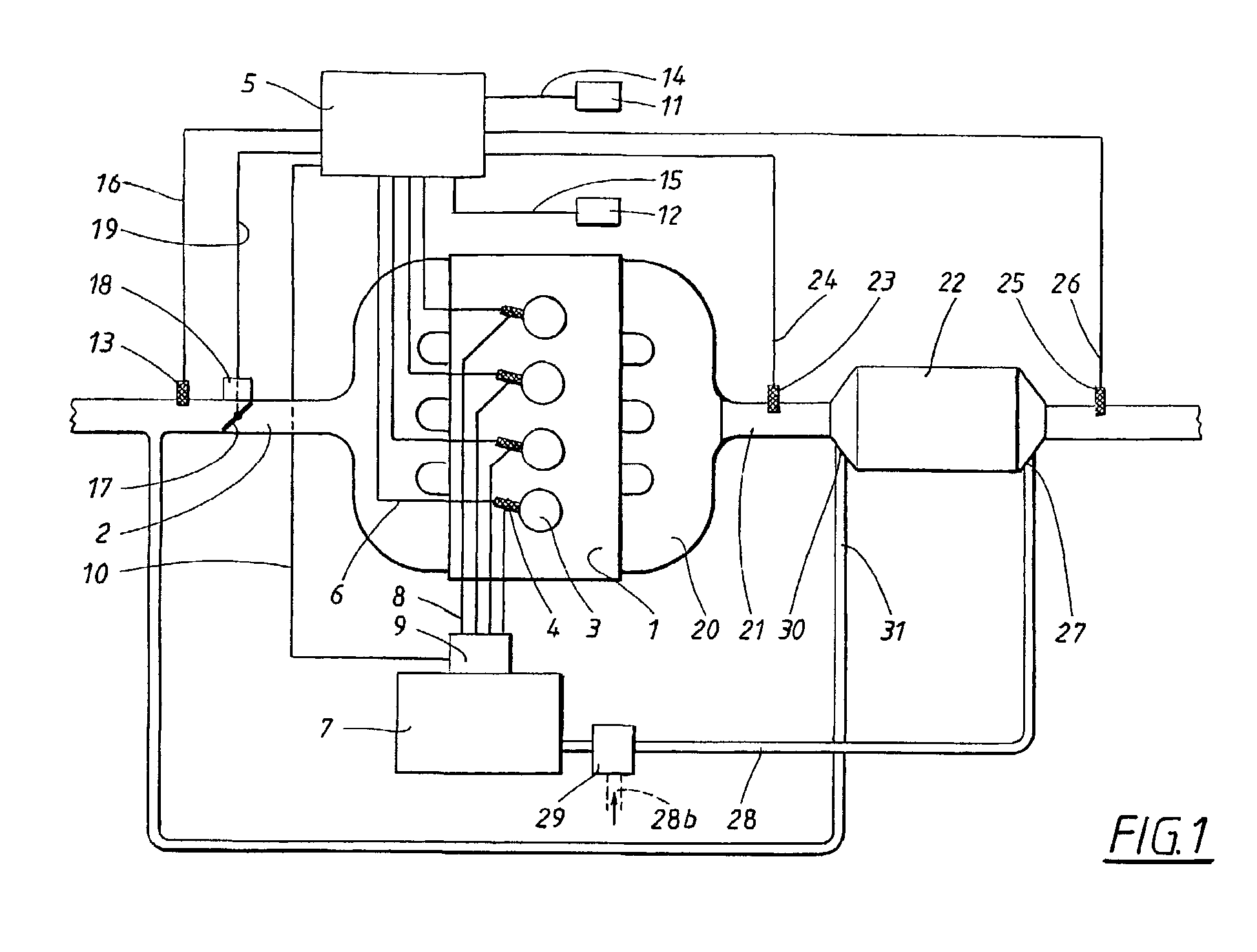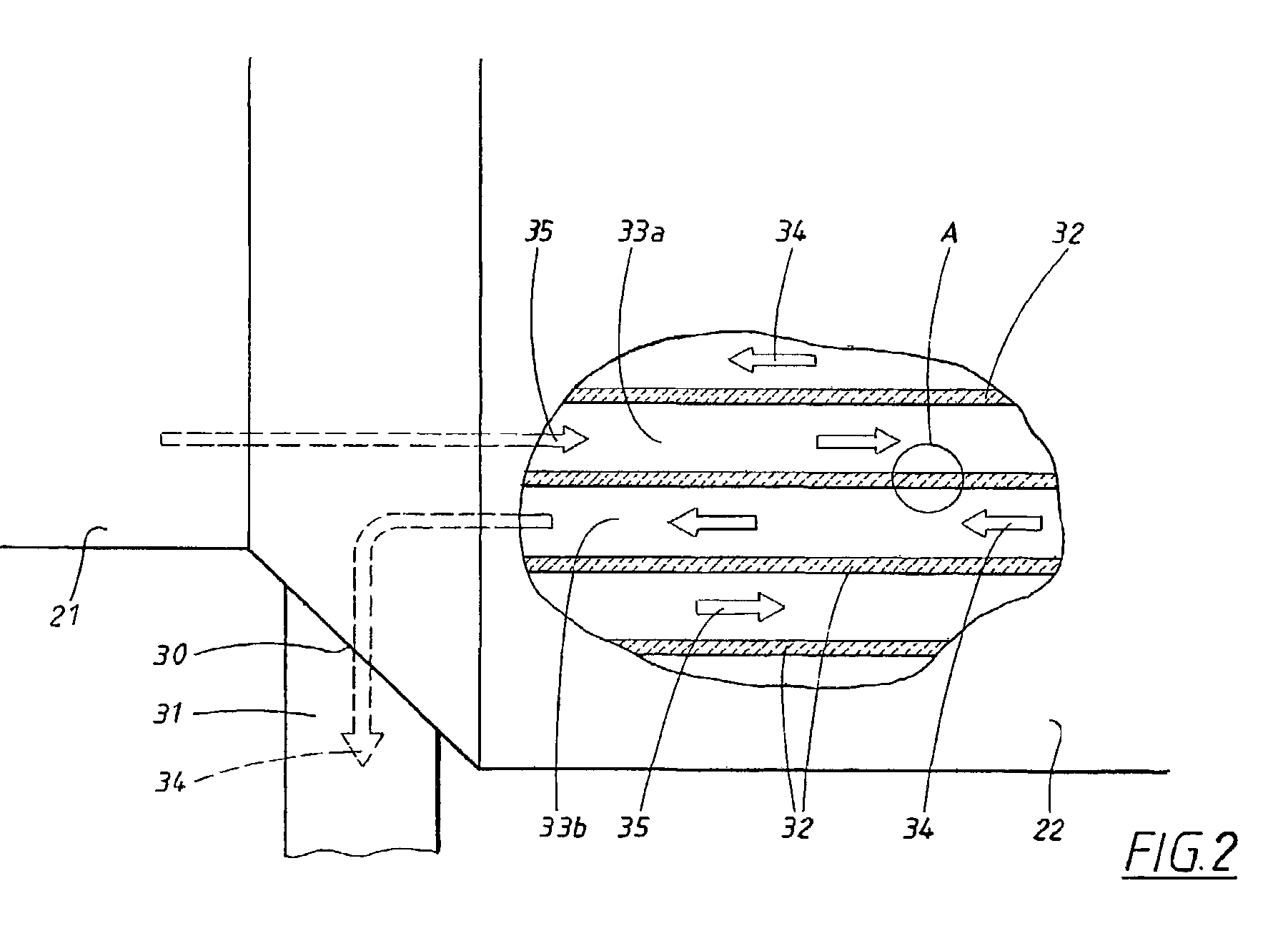Device and method for reduction of a gas component in an exhaust gas flow of a combustion engine
a technology of combustion engine and gas component, which is applied in the direction of exhaust treatment, phosphorus compounds, electrical control, etc., can solve the problems of no/sub>x/sub>compound reduction, no proper utilization of three-way catalysts, and surplus fuel supply, so as to reduce the amount of nox compounds. the effect of the engine discharg
- Summary
- Abstract
- Description
- Claims
- Application Information
AI Technical Summary
Benefits of technology
Problems solved by technology
Method used
Image
Examples
second embodiment
[0068]In the following, the invention is described with reference to the FIG. 4, which essentially corresponds to FIG. 1, but that does not include any supply of a reduction agent. Moreover, it can be noted that the same reference numerals are used in FIG. 4 for the components that also are apparent from FIG. 1.
[0069]According to what is apparent from FIG. 4, the separation unit 22 is connected with the inlet 2 of the engine 1 in a manner that corresponds to the above-mentioned embodiment; for example, via a conduit 31. Unlike the embodiment according to FIG. 1, however, in which the conduit 31 is utilized for return of any possible unutilized reduction agent to the engine 1, the conduit 31 in the embodiment according to FIG. 4 is utilized for return of NOx compounds that have been separated from the engine exhaust gases by means of the separation unit 22. In this case, the separation of NOx compounds takes place in a manner that corresponds to what has been explained above with ref...
third embodiment
[0072]It is known that a supply of water provided to a combustion engine decreases the generation of NOx compounds in the engine. This principle is utilized in the third embodiment in so far as a certain amount of water is separated from the exhaust gas flow in the separation unit and is subsequently returned to the air inlet 2 of the engine 1, via a return conduit 31 that is intended for return of water.
fourth embodiment
[0073]the invention is shown in FIG. 5. FIG. 5 is a slightly simplified principal diagram of an engine system which essentially corresponds to what has been described above, but which is intended for an engine 1 which is provided with a turbo-aggregate 36, which in turn includes an exhaust gas operated turbine 37 and a compressor 38 by means of which inflowing air is compressed. To this end, the turbine 37 and the compressor 38 are arranged on a common axle 39 in a known manner, wherein the compressor 38 is operated by the turbine 37 that is in turn operated by the exhaust gases that flow from the engine 1. Moreover, the system includes a so-called “intercooler”40, by means of which the air, which has been fed through the compressor 38 and to the engine 1, can be cooled.
[0074]According to what is apparent from FIG. 5, the engine 1, via its exhaust pipe 21, is connected with a separation unit 22 of the corresponding type that has been described above. The exhaust gases from the engin...
PUM
| Property | Measurement | Unit |
|---|---|---|
| Flow rate | aaaaa | aaaaa |
| Transport properties | aaaaa | aaaaa |
| Reduction potential | aaaaa | aaaaa |
Abstract
Description
Claims
Application Information
 Login to View More
Login to View More - R&D
- Intellectual Property
- Life Sciences
- Materials
- Tech Scout
- Unparalleled Data Quality
- Higher Quality Content
- 60% Fewer Hallucinations
Browse by: Latest US Patents, China's latest patents, Technical Efficacy Thesaurus, Application Domain, Technology Topic, Popular Technical Reports.
© 2025 PatSnap. All rights reserved.Legal|Privacy policy|Modern Slavery Act Transparency Statement|Sitemap|About US| Contact US: help@patsnap.com



